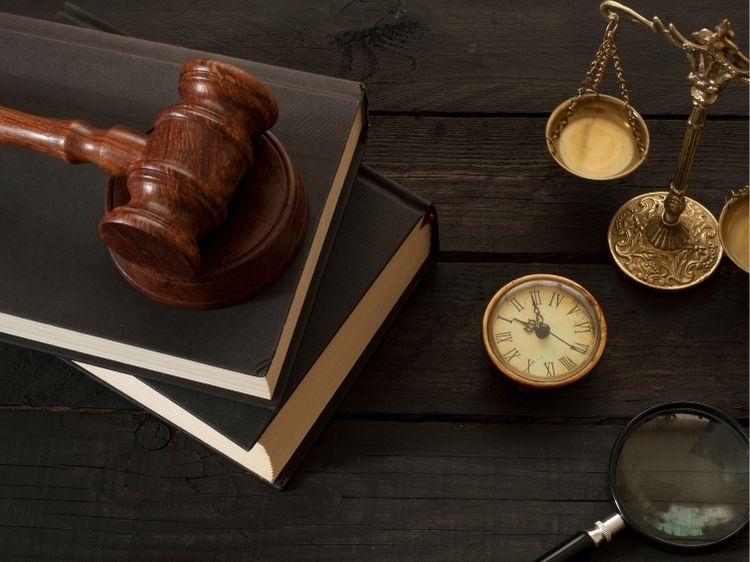In everyday life, we’ve all heard the terms “liability” and “negligence” thrown around—whether in the context of insurance claims, personal injury cases, or even casual conversation. But what do these terms actually mean? Liability refers to a party’s legal responsibility for their actions or inactions, while negligence is when someone fails to take reasonable care, leading to harm or damage. When combined, liability and negligence play a crucial role in legal disputes, especially in personal injury and civil cases. In this article, we’ll dive into the intricacies of liability and negligence, offering a clear understanding of both terms and how they impact legal outcomes.
What is Liability?
At its core, liability refers to the legal responsibility one holds for their actions or lack thereof. If an individual’s actions (or inactions) cause harm to another person or their property, they can be held liable. Liability can arise in various contexts, such as contracts, torts (civil wrongs), and even criminal law.
There are two main types of liability:
- Civil Liability: This typically involves a breach of a duty or responsibility that leads to harm, often resulting in compensation for damages.
- Criminal Liability: This arises when an individual violates a law and faces punishment such as fines or imprisonment.
For instance, if you accidentally damage your neighbor’s fence while reversing your car, you’re liable for the cost of repairs.
What is Negligence?
Negligence is often the linchpin in liability cases. Simply put, negligence occurs when someone fails to take reasonable care to avoid causing harm. The key word here is “reasonable”—it’s the standard against which actions are measured. Negligence doesn’t necessarily mean intentional harm, but rather carelessness that leads to damage.
To establish negligence in court, four elements must be proven:
- Duty of Care: The defendant had a legal obligation to act in a certain way.
- Breach of Duty: The defendant failed to meet that obligation.
- Causation: The breach directly caused harm or damage.
- Damages: The plaintiff suffered actual harm or loss.
Consider this: If a store owner fails to clean up a spill, and a customer slips and injures themselves, the store owner could be found negligent for not maintaining a safe environment.
The Relationship Between Liability and Negligence
Now that we’ve covered the basics, how do liability and negligence interact? In many legal cases, negligence forms the basis for liability. When someone is negligent, and their actions (or inactions) cause harm, they are typically held liable for the damages.
In personal injury cases, this relationship is at the heart of many disputes. For example, in a car accident, the driver who runs a red light may be found negligent for not following traffic rules. As a result, they are held liable for any injuries or property damage that occurs.
Types of Negligence
Negligence comes in different forms, each with its own implications in legal scenarios:
- Contributory Negligence: In some cases, the plaintiff may also be partially responsible for the harm they suffered. In contributory negligence systems, if the plaintiff is found even slightly responsible, they may be barred from recovering damages.
- Comparative Negligence: This doctrine allows for the sharing of liability. If the plaintiff is partly to blame, their compensation is reduced by the percentage of their fault.
- Gross Negligence: This is a more severe form of negligence, where the defendant’s actions demonstrate a reckless disregard for the safety or well-being of others.
Key Cases Involving Liability and Negligence
Several landmark cases have shaped the legal landscape of liability and negligence:
- Donoghue v. Stevenson (1932): This British case laid the foundation for modern negligence law. In it, Mrs. Donoghue drank a bottle of ginger beer, only to discover a decomposed snail inside. She sued the manufacturer for negligence, leading to the establishment of the “duty of care” principle.
- Palsgraf v. Long Island Railroad Co. (1928): This American case defined the concept of proximate cause in negligence cases. Mrs. Palsgraf was injured when a man carrying fireworks was helped onto a train, and the resulting explosion caused a scale to fall on her. The court ultimately ruled that the railroad was not liable, as the harm was not a foreseeable result of their actions.
How to Protect Yourself from Liability
While it’s impossible to avoid all risks, there are steps you can take to minimize your exposure to liability:
- Obtain Insurance: Whether it’s homeowners, car, or professional liability insurance, having the right coverage can protect you financially if you’re found liable for damages.
- Follow the Law: Ensuring you follow safety regulations, traffic rules, and professional guidelines can reduce your chances of being found negligent.
- Maintain Proper Documentation: Keeping records of inspections, repairs, and other safety measures can help defend against negligence claims.
Common Examples of Liability and Negligence
Let’s look at a few everyday situations where liability and negligence might come into play:
- Slip and Fall Accidents: Property owners are liable for keeping their premises safe. If someone slips on an icy walkway because the owner failed to salt it, they could be held liable for negligence.
- Medical Malpractice: Healthcare providers owe a duty of care to their patients. If a doctor fails to follow established medical practices, leading to patient harm, they could be found liable for negligence.
- Product Liability: Manufacturers can be held liable if their products cause harm due to defects or insufficient warnings.
FAQs on Liability and Negligence
- What is the difference between liability and negligence?
Liability refers to being legally responsible for something, while negligence is the failure to exercise reasonable care, leading to harm. Negligence often leads to liability in civil cases. - Can you be liable without being negligent?
Yes, in some cases, such as strict liability, a person or entity can be held liable without proving negligence. This applies in cases like defective products or dangerous activities. - What defenses are available against negligence claims?
Common defenses include showing that the defendant did not owe a duty of care, that the plaintiff was also negligent (contributory or comparative negligence), or that the harm was not directly caused by the defendant’s actions. - How is liability determined in a car accident?
Liability in car accidents is typically determined by the laws of negligence. The driver who breached their duty of care (e.g., by speeding or running a red light) is usually found liable for damages. - What are damages in a negligence case?
Damages refer to the monetary compensation awarded to the plaintiff for the harm they suffered. This can include medical expenses, lost wages, and pain and suffering.
Conclusion
Understanding the interplay between liability and negligence is essential, especially if you want to protect yourself from potential legal issues. While accidents happen, knowing your rights and responsibilities can help you avoid costly mistakes. Whether it’s through proper insurance, following safety protocols, or simply being aware of your surroundings, taking the necessary steps to prevent negligence can save you from being held liable for unintended harm.
Authoritative Links
www.legalzoom.com
www.findlaw.com
www.nolo.com



